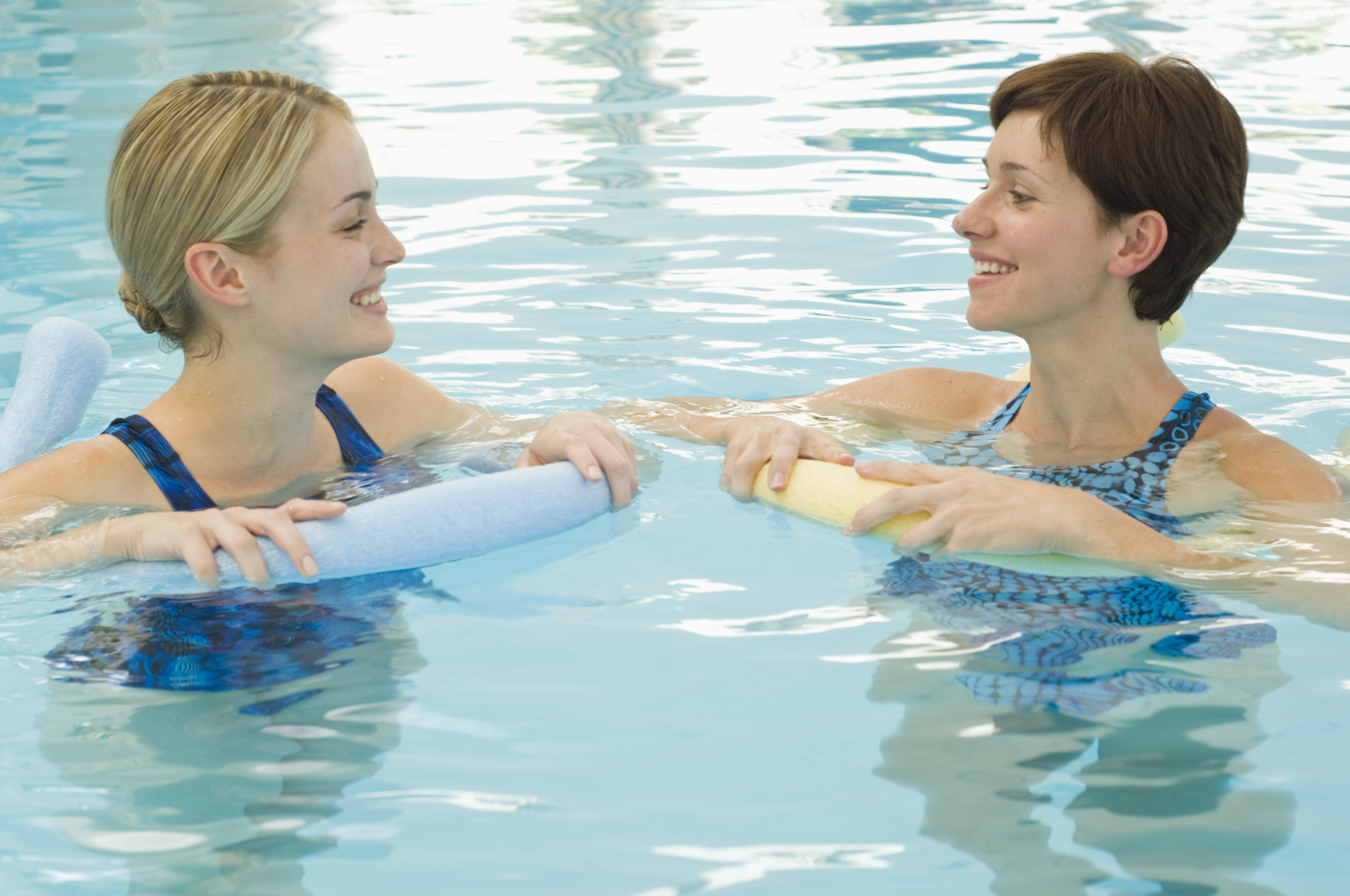
Originally published on Livestrong March 2014
The sacroiliac, or SI joints, are shock-absorbers that connect your spine to your pelvis and transmit forces from your upper body to your hips and legs. If there is too much or too little movement in an SI joint, you may experience pain, inflammation or arthritis. Water exercises that strengthen your abdominal and back muscles as well as increase range of motion in your hips and torso will provide more support and less strain on your SI joints.
Sacroiliac (SI) Joints
At the base of your spine, the sacrum is a triangle-shaped bone made up of five vertebrae fused together. It rests within a V-shaped space in the back of your pelvis and is connected to your pelvis by small, strong ligaments. This design doesn’t allow much movement in the SI joints, but some movement is necessary for normal function. Because your SI joints transfer compressive forces during weight-bearing exercises, they must be very stable during that type of activity. These joints move a bit more during non-weight bearing activity to adjust to movement of the pelvis and lower back. A number of muscles, including your diaphragm, transverse abdominis, multifidus and pelvic floor muscles help support the SI joints to provide pelvic stability. Other muscles such as the psoas, quadratus lumborum, obliques, latissimus dorsi and glutes are responsible for movement around the pelvis.
Water Exercise and the SI Joint
The anti-gravity environment of water enables you to relax and release opposing muscles to improve your range of motion. Also, because water surrounds your body, it affects every direction of movement, challenging your core muscles and providing balanced strength training. According to a study in the “International Journal of Sports Medicine,” the hydrostatic properties of water decrease inflammation — a common cause of SI joint dysfunction. Dynamic range-of-motion aquatic exercises combined with diaphragmatic breathing will help support your SI joints. Include exercises that challenge balance, move more than one joint and work more than one muscle through a fluid motion.
Exercises to Include
As soon as you step into the water, your core muscles engage to help you balance. This property of water will challenge the muscles that stabilize your SI joint. Add pelvic tilts and arm movements such as pushing and pulling the water, arm circles, balancing on one foot, floating or walking backwards to further increase muscle stabilization. To increase your range of motion in the muscles surrounding your pelvis, include torso rotations that mimic golf and tennis swings, leg circles, knee-kicks or high knees, squats into pelvic tilts, hula-type hip circles, pivot turns, side steps and torso figure 8s.
What to Watch Out For
Always maintain core stabilization when you are in the water, and avoid arching your back. If your SI joint is very unstable, keep your feet on or close to the pool floor and avoid hip hyperextension. Because it is important to perform each repetition with correct technique, ask a physical therapist or aquatic personal trainer to teach you how to do the exercises. Always remember, if something hurts during the activity or causes significant pain the following day, don’t do it.
References
Writer Bio
Cindy Killip is a medical exercise specialist, health coach, author and speaker who has been teaching and writing about exercise and wellness since 1989. She authored the book Living the BONES Lifestyle: A Practical Guide to Conquering the Fear of Osteoporosis [2012]. Killip holds multiple certifications through the American Council on Exercise and degrees in communications and sociology from Trinity University with a focus on pre-med and exercise science/lifetime fitness. She attended graduate school studying exercise physiology at the University of New Mexico.
Article by Cindy Killip, published on Livestrong March 16, 2014



